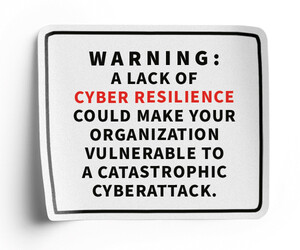Why SMBs Need Strong Backup Strategies
Ransomware attacks can paralyze an SMB customer by locking down vital systems, with bad actors demanding exorbitant ransom payments in exchange for data restoration. The key to mitigating this risk is to ensure you have a reliable backup strategy that starts with the 3-2-1 rule. This rule means creating:
- Three copies of your data: You need the original data and two backup copies.
- Two different media types: This could be a combination of disk and cloud storage or tape and disk.
- One copy stored offsite: This is to ensure that even in the case of a localized disaster, such as a fire or flood, your data is still recoverable.
This approach significantly reduces the risk of data loss, because data is stored across multiple locations. Even if one or two backups are compromised, the third is likely to remain intact, allowing for quick recovery.
RELATED: These solutions and services can help small businesses.
The Role of Immutable Storage in Defending Against Ransomware
While the 3-2-1 rule offers a solid foundation, IT leaders need a second layer of defense.
This is where immutable storage comes into play. Immutable storage is a type of data storage that cannot be altered, deleted or overwritten once it has been written. This is an essential part of a modern backup strategy because it ensures that even if ransomware infiltrates your network, your backup remains untouched and recoverable. (This is different from traditional storage systems, which can be modified, overwritten or deleted).
Even a few days of downtime can be catastrophic for small businesses, and having an immutable backup can mean the difference between staying operational and going out of business. It is essentially the only way to guarantee that your data remains safe even during a ransomware attack.
Whether you are in the early stages of developing your backup strategy or looking to upgrade your current systems, integrating immutable storage is key. Here are three components to remember:
- Ease of recovery: Ensure that your backups are not only protected but also easy to access and restore. Immutable backups should be part of a broader recovery plan that includes quick access and a clear process for restoring data.
- Scalability: As your business grows, so will your data storage needs. Choose an immutable storage solution that can scale over time.
- Integration with existing infrastructure: Your immutable storage solution should integrate seamlessly with your current IT infrastructure to avoid complicating recovery processes.
- Regular testing: Even the most secure backup strategies can fail if they are not regularly tested. Schedule regular recovery drills to ensure that your data can be restored promptly in the event of an attack.
Click the banner below to read the 2024 CDW Cybersecurity Research Report.














